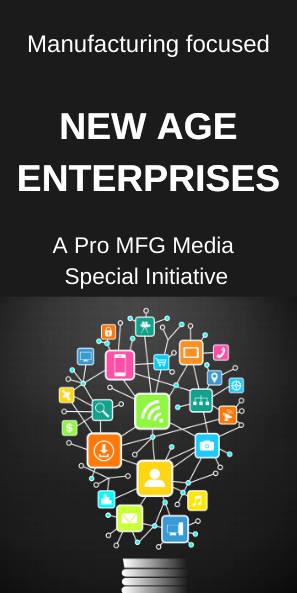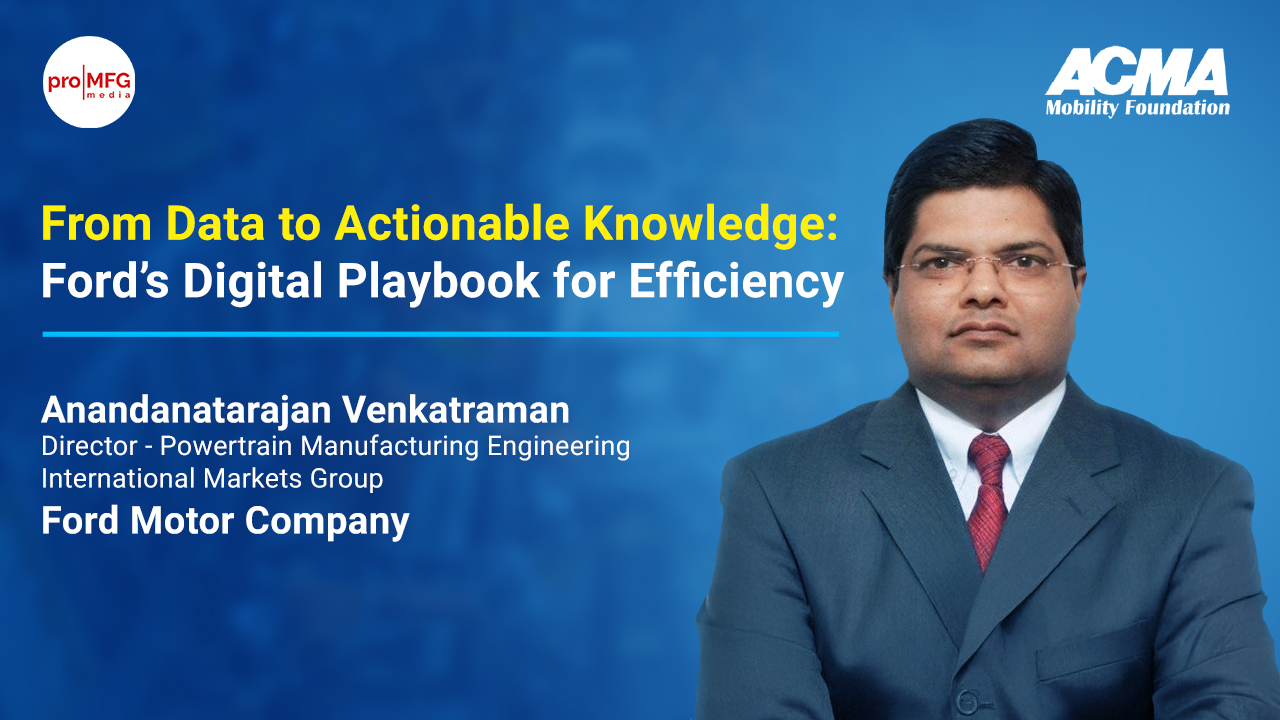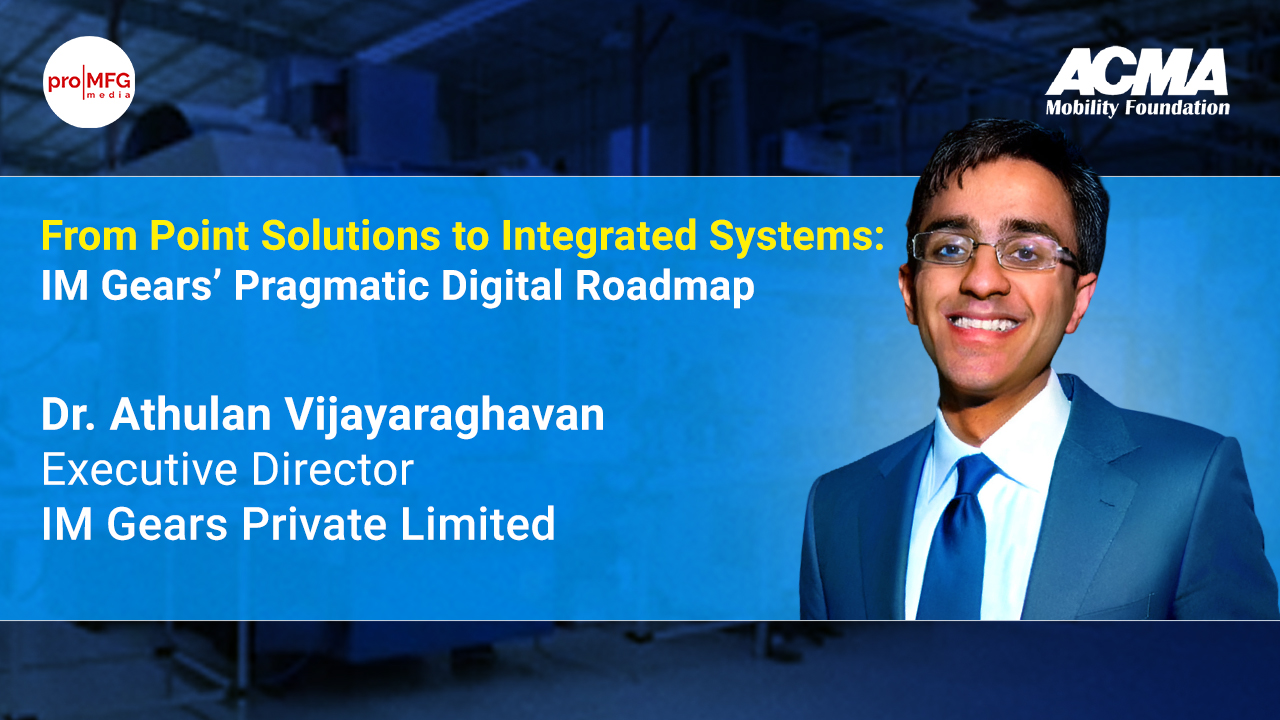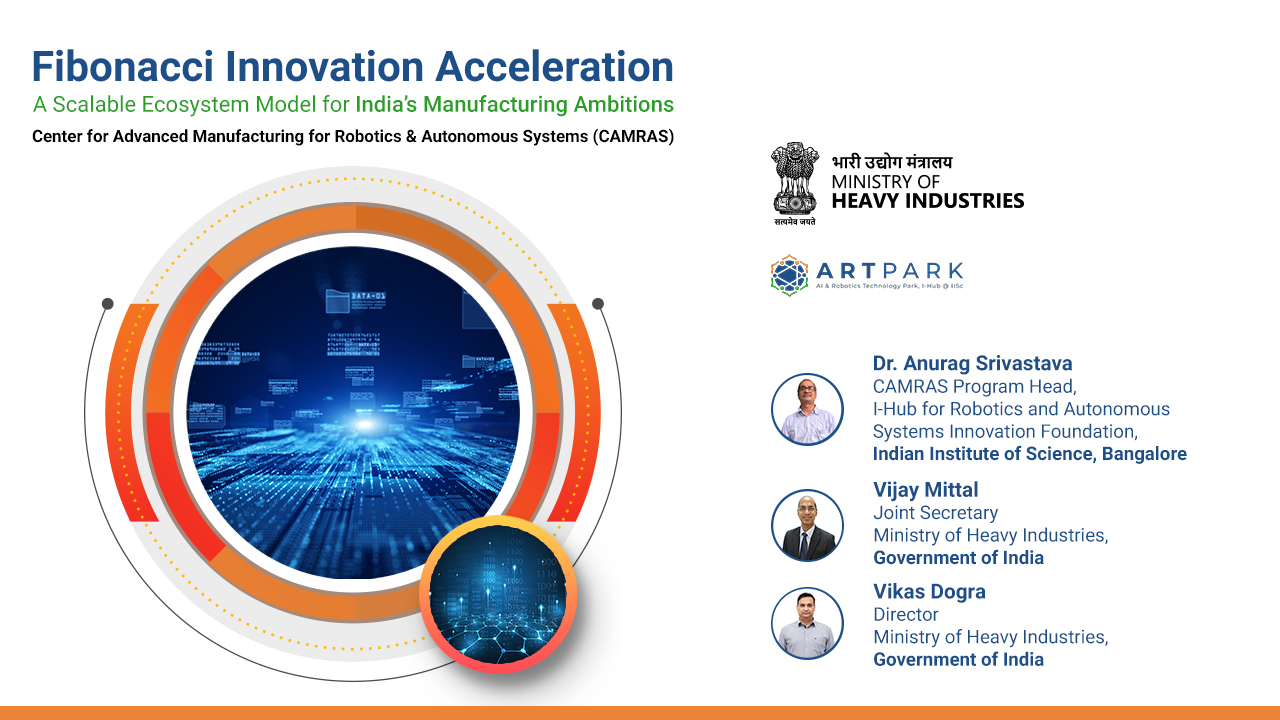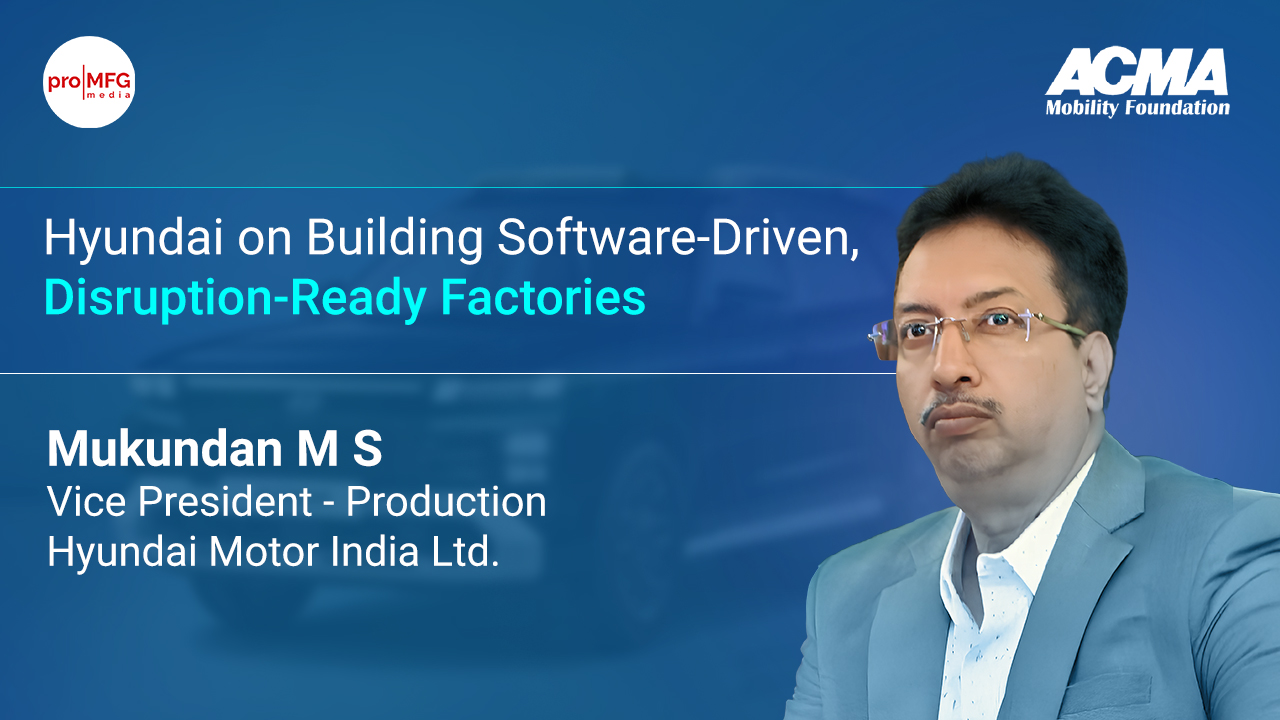For a couple decades, India was the ultimate destination for outsourcing software services as well as knowledge processes, but it is now all geared up to grab the center position as the global manufacturing hub. Mr. Pradhyumna Ingle, Regional Business Head, Asia Pacific, General Manufacturing, Maintenance and Consumer; Construction adhesives businesses, Henkel KgaA shares with Pro MFG Media on how India can position itself as a global manufacturing hub. Currently based in Shanghai, China, he has over 23 years of experience in building and growing successful businesses and teams in India, Middle East, Africa and Asia. Pradhyumna joined Henkel in India in 2001 and has led the Asia Pacific Marketing and Business Development Organization for Henkel’s Adhesive Technologies business in addition to assuming various other strategic roles in India and China.
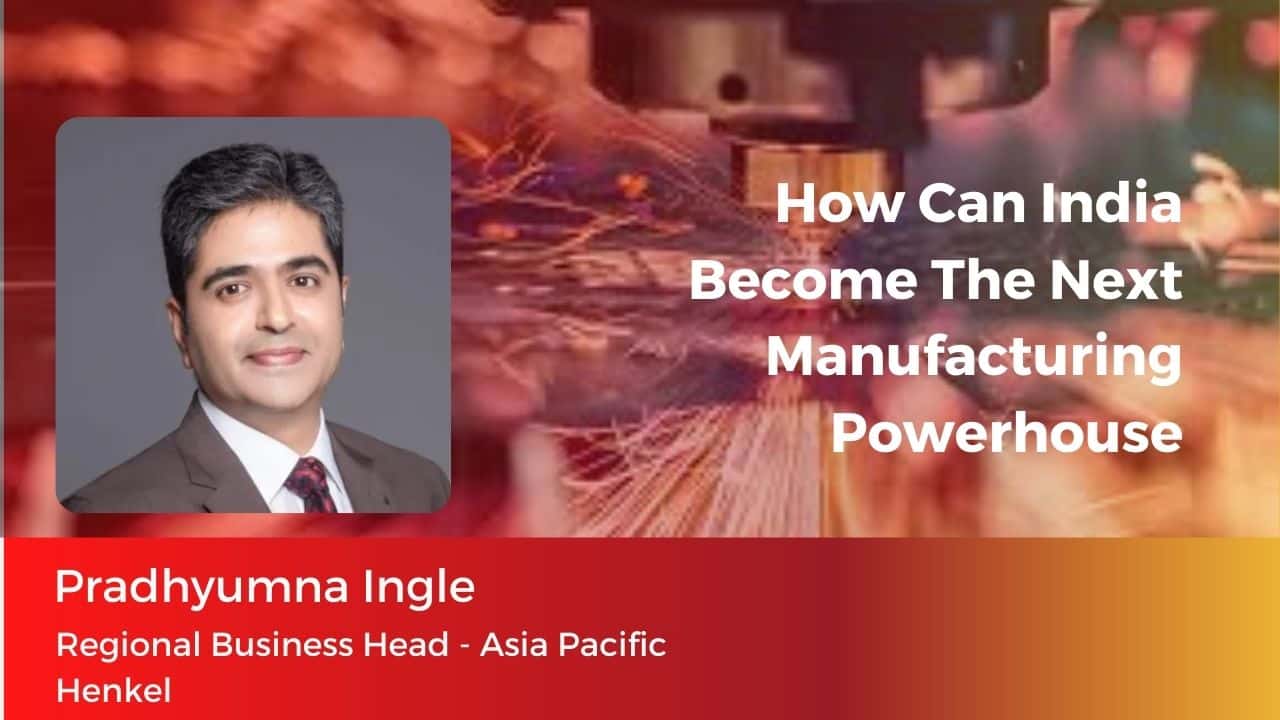
Q: How can India leverage the opportunity to play a significant part in the global manufacturing supply chain?
Mr. Ingle: India is poised at an interesting juncture that will change the role and position of the Indian economy on the global platform. The Indian manufacturing industry can contribute to the aspiration of India becoming a 5 trillion economy and play a vital role in India’s growth journey. Currently, the manufacturing sector contributes to well under 20% of the country’s total GDP, and we must aspire it to contribute 25% - 30% of the total GDP in coming years. The country has all the right conditions for this growth supported by a combination of young demographics, with more than 65% of India's population under the age of 35, and increasing urbanization and middle class driving massive domestic demand. The growth in manufacturing will not only generate an enormous amount of employment allowing us to leverage our young manpower but also offer great captive local demand to the manufacturers. The changing dynamics of the global economy and the benefits India offers combine as an immense headroom for the manufacturing sector to grow in India.
To harness the opportunity, the required efforts can be encapsulated in the 'SET' framework - wherein the 'S' part represents strategic planning. India will have to choose the potential sector and the segments that offer a strong competitive edge over other nations. While India has already taken its initial steps with various government initiatives such as AtmaNirbhar Bharat and the Production Linked Incentive (PLI) Scheme, this further can be enhanced with an end-to-end planning including targets and ecosystem.
In addition to traditional manufacturing, there is also an emerging opportunity to nurture and leverage our technical talent and establish ourselves as a leader in the Fourth Industrial Revolution. There is a strong start-up and innovation culture - India has improved its ranking from 81 to 52 between 2015 and 2019 on the Global Innovation Index. In 2019 India ranked third in the world in terms of attracting investment for technology transactions.
The ‘E’ part of the framework stands for ‘Enabler’, wherein it stands as a pillar to have the suitable infrastructure and ecosystems. While India has a strong competitive advantage in terms of its low labor cost, captive demand, and well-educated skilled & semi-skilled workforce, to be able to harness the full potential, the country needs the suitable infrastructure in place.
As an example, the whole process of transporting goods from point A to B must be more predictable. In recent times, the country has executed significant strides to achieve the desired output. The turnaround time of movement of goods on ports has come down to under three days in 2019 from six days in 2015. The implementation of GST in 2015 has accelerated the pace of goods movement, and with the development of various freight corridors and highways, the government has set a strong momentum. However, India needs to push the accelerator further in this direction to emerge as a global manufacturing hub.
The second part of ‘Enabler’ also acts as a pillar to source the right resources for the foreign investors, which will help to set up their manufacturing units in India. A lot of companies today consider it complex to find their way through the elaborate maze of laws to cross while setting up their businesses. They expect single-window communication and suitable agencies who understand the challenges involved in setting up a business outside their home country. Government has taken steps like promoting ease of doing business and liberalization of the foreign direct investment norms to attract overseas investors and the results are visible. Additionally, the government is also promoting lateral entry of industry experts in governance. This will infuse fresh talent in bureaucracy and create stronger interface.
And lastly, the ‘T’ part of the framework is about ‘Transparency’, which revolves around reducing corruption and increasing agility, accountability, and predictability. The launch of the Infrastructure Information System portal by GoI is a thoughtful move in this direction where the companies can see what slots and incentive schemes are available at various industrial zones. We are also increasingly becoming Digital which is cultivating a culture of transparency within our system. An accelerated focus, careful supervision, and implementation of the other two pillars of ‘Strategic Planning’ and ‘Enablers’ of the ‘SET’ framework will significantly help India to become a part of the global manufacturing champions club.
Q: Could you shed light on the key elements of Henkel’s strategic framework, ‘Purposeful Growth’? How has your organisation cultivated sustainability as a fundamental factor while developing innovations?
Mr. Ingle: Henkel, a global company with more than 140 years of success with leading positions in industrial and consumer businesses: Adhesive Technologies, Beauty Care and Laundry & Home Care. Headquartered in Dusseldorf, Germany, Henkel enjoys a leadership position both in terms of market share and its technological prowess in many of the markets of its presence. Our commitment to relentlessly address the ever-evolving needs of our customers and industry makes us their preferred choice.
The organization is building a solid foundation for the future through its strategic framework that is built around the philosophy of ‘Purposeful Growth’ announced in early 2020. Purposeful Growth in our context means putting the purpose of holistic development beyond financials. It believes in the ideology that when an organization focuses on creating value for all stakeholders, the financial value is the resultant outcome of the same. Henkel’s strategic framework is built around the following six pillars:
We have structured six strategic priorities into our new strategic framework, which will reshape how we drive performance and deliver on our aspiration of purposeful growth, both in the short and the long term.
● Rigorously shape a WINNING PORTFOLIO - we will optimize and shape our portfolio with an aspiration to focus where we can bring most value.
● Accelerate with impactful INNOVATIONS supported by increased investments to shape the markets and create a competitive edge.
● Boost SUSTAINABILITY into a true differentiator
● Transform DIGITAL into a customer & consumer value creator
● Reshape OPERATING MODELS to be lean, fast & simple in every single operation across the company
● Accelerate CULTURAL JOURNEY with our Leadership Commitments at the core.
Henkel believes that sustainability is the cornerstone of its success in all the markets of its presence. It is a crucial part of its DNA and one of the most vital enablers of value amongst the other pillars of its strategic framework. The three focus areas of Henkel to push forward its sustainability agenda is as follow:
⮚ To become climate-positive by 2040: The organization plans to reduce its carbon footprint from its production activities by 65 percent and save 100 million tons of CO2 together with its consumers, customers, and suppliers by 2025.
⮚ Work towards a circular economy and zero plastic waste in the environment: Henkel has set an ambitious target of 100 percent of its packaging material to be either recyclable or reusable by 2025, and the organization aims to reduce fossil-based virgin plastics in its consumer product packaging by 50 percent.
⮚ Enhance positive social impact on communities: The Company plans to create a positive social impact through 100 percent responsible sourcing, by leveraging its more than 50,000 engaged employees, and by helping to improve 20 million lives globally by 2025.
The organization is confident that with sustainability firmly anchored in all its activities, it will not only just deliver positive outcomes for the environment and society but will also continue to hold a leadership position in the market.
NEWSLETTER
TRENDING ON PRO MFG
MORE FROM THE SECTION

